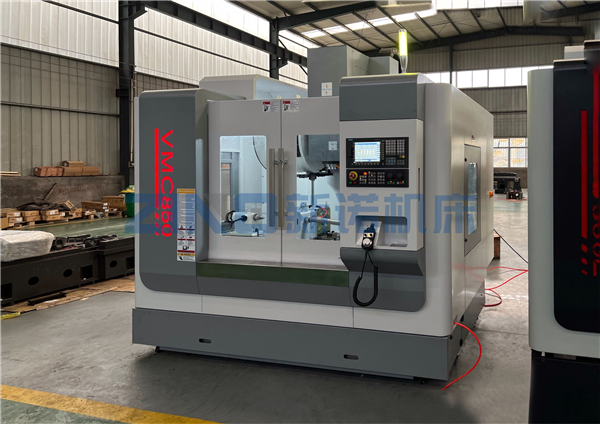
How to improve the working efficiency of the machining center 850?
 Time:2025-07-22
Time:2025-07-22  Visits:399
Visits:399Improving the working efficiency of a machining center 850 involves multiple strategies encompassing process optimization, equipment management, production workflow enhancements, and operator skill improvement. Here are some specific measures:
1. Process Optimization:
Adopt High-Performance Tools: Use tools such as coated tools and ceramic tools to enhance cutting speeds and tool life.
Optimize Cutting Parameters: Adjust feed rates, spindle speeds, and cutting depths to balance processing efficiency and tool wear.
Reduce Empty Travel: Minimize non-cutting movements and optimize tool paths, such as using spiral feed and layered cutting techniques.
Utilize Efficient CAM Software: Generate optimal tool paths with CAM software to reduce redundant actions.
Apply Macro Programs or Subroutines: Simplify repetitive machining tasks through macro programming or subroutines.
Employ High-Speed Machining (HSM) Strategies: Enhance surface quality and efficiency by using small cutting depths and high feed rates.
2. Equipment Management:
Clean and Lubricate: Regularly clean guides and screw rods to ensure lubrication and precision.
Inspect Stability: Check the stability of the spindle and tool clamping system to prevent vibrations that can lead to processing errors.
Regular Calibration: Periodically calibrate the machine tool coordinate system and tool compensation.
Upgrade Equipment: Adopt high-speed spindles and quick tool change magazines (such as disk-type magazines) to shorten tool change times.
Automate Accessories: Increase automation attachments like probes and tool setters to reduce manual intervention.
Implement Hydraulic/Pneumatic Fixtures: Utilize hydraulic or pneumatic fixtures to shorten clamping times.
Multi-Station Fixtures: Design multi-station fixtures for simultaneous processing of multiple parts.

3. Production Workflow Enhancements:
Batch Processing: Process similar parts in batches to reduce tool changes and machine setup times.
Real-Time Monitoring: Continuously monitor equipment status to avoid downtime and waiting periods.
Automate Material Handling: Integrate robots or manipulators for automatic loading and unloading.
Deploy Online Detection Systems: Provide real-time feedback on processing quality.
Manage Production Data: Use a Manufacturing Execution System (MES) to manage production data, analyze bottlenecks, and optimize scheduling.
4. Material and Pre-processing:
Pre-process Blanks: Conduct pre-processing such as rough milling and heat treatment to reduce CNC machining allowances.
Select Easy-to-Cut Materials: Opt for materials like aluminum alloy and pre-hardened steel that are easier to machine.
Near-Net Shape Blanks: Utilize precision casting or 3D printing to provide near-net-shape blanks, which shorten processing times.
5. Operator Skill and Standardization:
Skill Enhancement: Improve operators' programming, tool management, and troubleshooting abilities.
Standardize Operating Procedures (SOPs): Develop and strictly implement SOPs to reduce human errors and waste of time.
Training: Provide comprehensive training to operators to ensure they can efficiently operate and maintain the machining center 850.
6. Other Considerations:
Cooling and Chip Removal: Use high-pressure cooling systems to extend tool life and configure centralized chip removal devices to reduce downtime for cleaning.
Energy Management: Optimize equipment standby modes to lower energy consumption during non-processing periods.
By comprehensively implementing these measures, the working efficiency of the machining center 850 can be significantly enhanced, leading to cost reduction and quality assurance. It's crucial to prioritize the improvement directions based on actual production scenarios and continuously track optimization effects.

 +86 18501566670
+86 18501566670